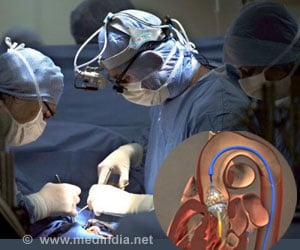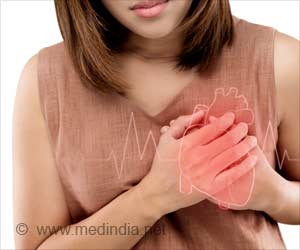A study shows that swimmers and scuba divers can improve their swimming endurance and breathing capacity through targeted training of the respiratory muscles
A study conducted by researchers in University at Buffalo Center for Research and Education in Special Environments (CRESE), shows that swimmers and scuba divers can improve their swimming endurance and breathing capacity through targeted training of the respiratory muscles.
In this pioneering work, subjects who followed a resistance-breathing training protocol (breathing load) improved their respiratory muscle strength and their snorkel swimming time by 33 percent and underwater scuba swimming time by 66 percent, compared to their baseline values. Participants randomized to a similar protocol requiring high respiratory flow rates (endurance) improved their respiratory endurance and surface and underwater swimming times by 38 percent and 26 percent, respectively.The group randomized to a placebo-training program, conducted with the same equipment and protocol, showed no significant improvement in respiratory or swimming performance.
Results of the study appeared in the December online issue of the European Journal of Applied Physiology and will appear in printnext month.
"Specific respiratory muscle training could allow divers in the military, civilian rescue services, commercial enterprises and sport to perform better underwater," said Claes E.G. Lundgren, M.D., Ph.D., professor of physiology and biophysics in the UB School of Medicine and Biomedical Sciences and the study's senior author.
David R. Pendergast, Ed.D., professor of physiology and biophysics, adjunct professor of mechanical and aerospace engineering and CRESE director, along with his research group, were instrumental in the research.
Lundgren said that training the breathing muscles to improve the performance of swimming muscles seems counter-intuitive, but is logical physiologically.
Advertisement
"As shown by other studies, when breathing muscles become fatigued, the body switches to survival mode and "steals" blood flow and oxygen away from the locomotor muscles and redirects it to the respiratory muscles to enable the diver to continue breathing. Deprived of oxygen and fuel, the locomotor muscles become fatigued.
Advertisement
The study involved 30 experienced male swimmers in their 20s. To insure the safety of participants and establish uniform fitness, all enrollees took four weeks of swim-fin and scuba-diving training before the start of the study.
Participants also underwent baseline tests to determine pulmonary strength (maximal pressures they could generate), pulmonary endurance (time that a high ventilation could be sustained), VO2max (the maximal volume of oxygen they could consume per minute to produce energy for exercise), and length of time they could swim at a moderately high speed.
The men then were randomized to one of three training protocols: RRMT-resistance respiratory muscle training; ERMT-endurance respiratory muscle training; or PRMT-placebo respiratory muscle training. The protocols were followed for 30 minutes per day, five days a week, for four weeks.
Swimmers assigned to the RRMT inhaled and exhaled against a valve that had a set opening pressure and imposed a continuous resistance using specialized breathing valves and a computer tracking system developed in CRESE.
Swimmers in the ERMT protocol, using the same equipment, increased their breathing rate and tidal volume (total ventilation) progressively each week, while a re-breathing bag insured that the amount of carbon dioxide in the blood was held constant, in spite of the hyperventilation during the training.
During PRMT, subjects performed a series of 10-second breath-holds, with 90-second rest periods between breath-holds, using the same equipment as in RRMT and ERMT. The rest periods were shortened by 10 seconds each week, ending with a 60-second rest between breath-holds during the fourth week.
All subjects participated in a twice-a-week, identical fin-swimming maintenance program during the four weeks of RMT training to insure that they maintained, but didn't increase, their fitness levels during the study's training protocol.
At the end of the four weeks, study participants repeated the baseline tests.
"Results showed that the RRMT and ERMT protocols used in this study significantly extended swimming endurance through an improvement in respiratory muscle performance," said Lundgren.
"These data are in agreement with previous studies in cyclists, rowers and runners. They suggest that athletes in most sports could improve their performance by undergoing respiratory muscle training. It is also clear that the greater the stress on the respiratory system, the larger the improvement in performance."
Lundgren noted that this type of training also might be useful for patients who suffer from respiratory stress.
Juli A. Wylegala, Ph.D., UB clinical assistant professor of rehabilitation sciences, is first author. Pendergast, Luc E. Gosselin, Ph.D., associate professor of exercise and nutrition sciences, and Dan E. Warkander, Ph.D., research assistant professor of physiology and biophysics, are additional authors.
The research was supported by a grant from the Naval Sea Costal Systems (Navy Experimental Diving Unit).
The University at Buffalo is a premier research-intensive public university, the largest and most comprehensive campus in the State University of New York. The School of Medicine and Biomedical Sciences is one of five schools that constitute UB's Academic Health Center.
Source-Eurekalert
SRI








